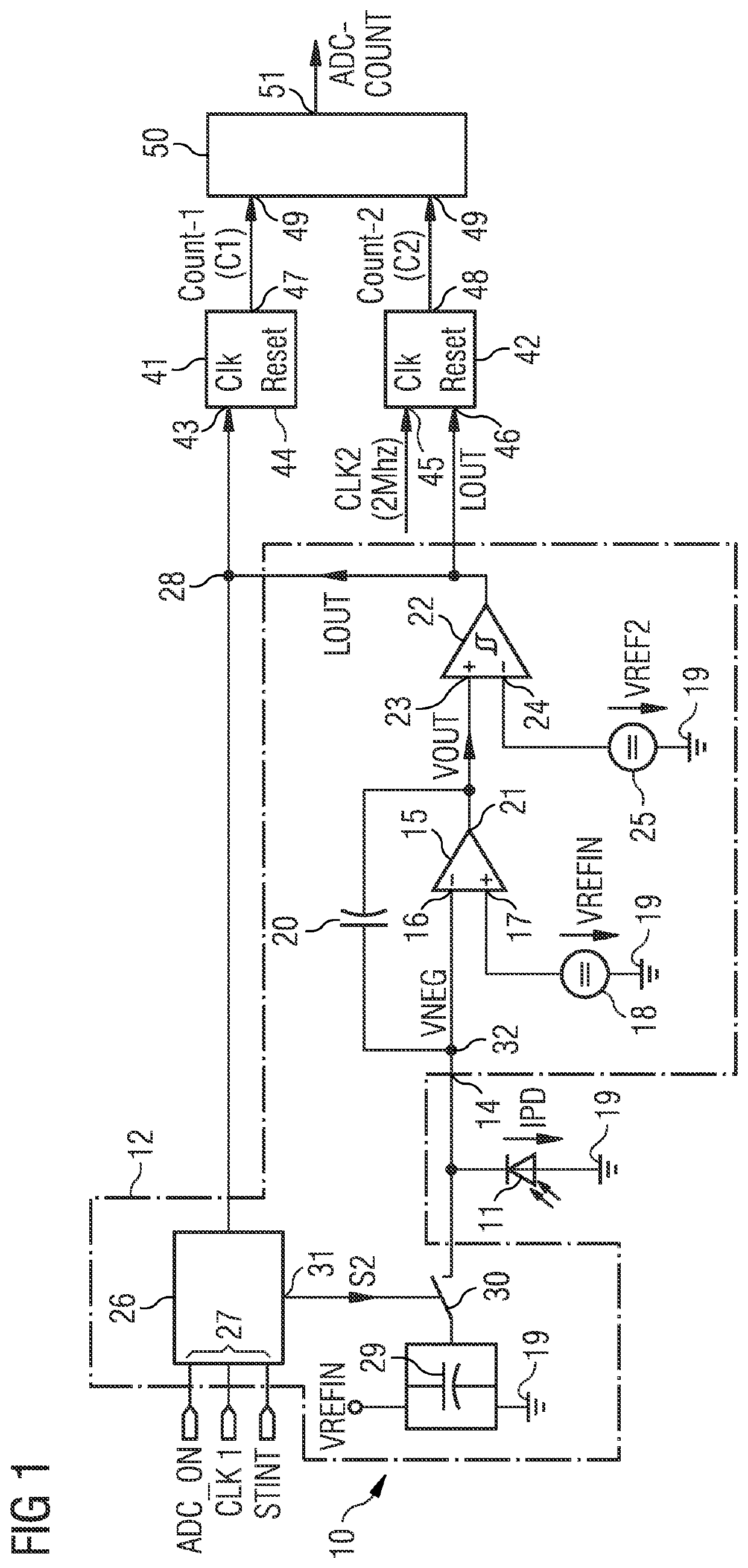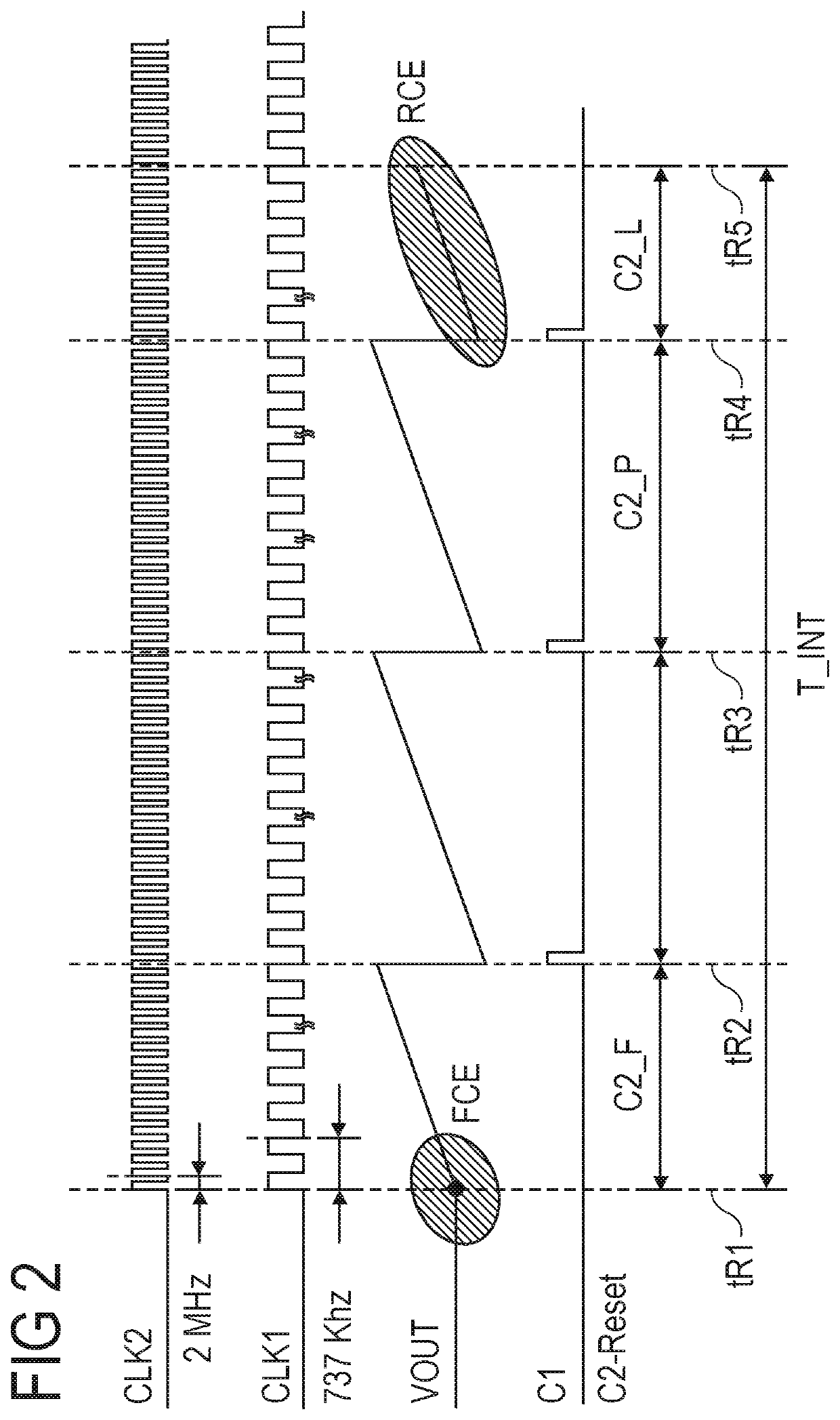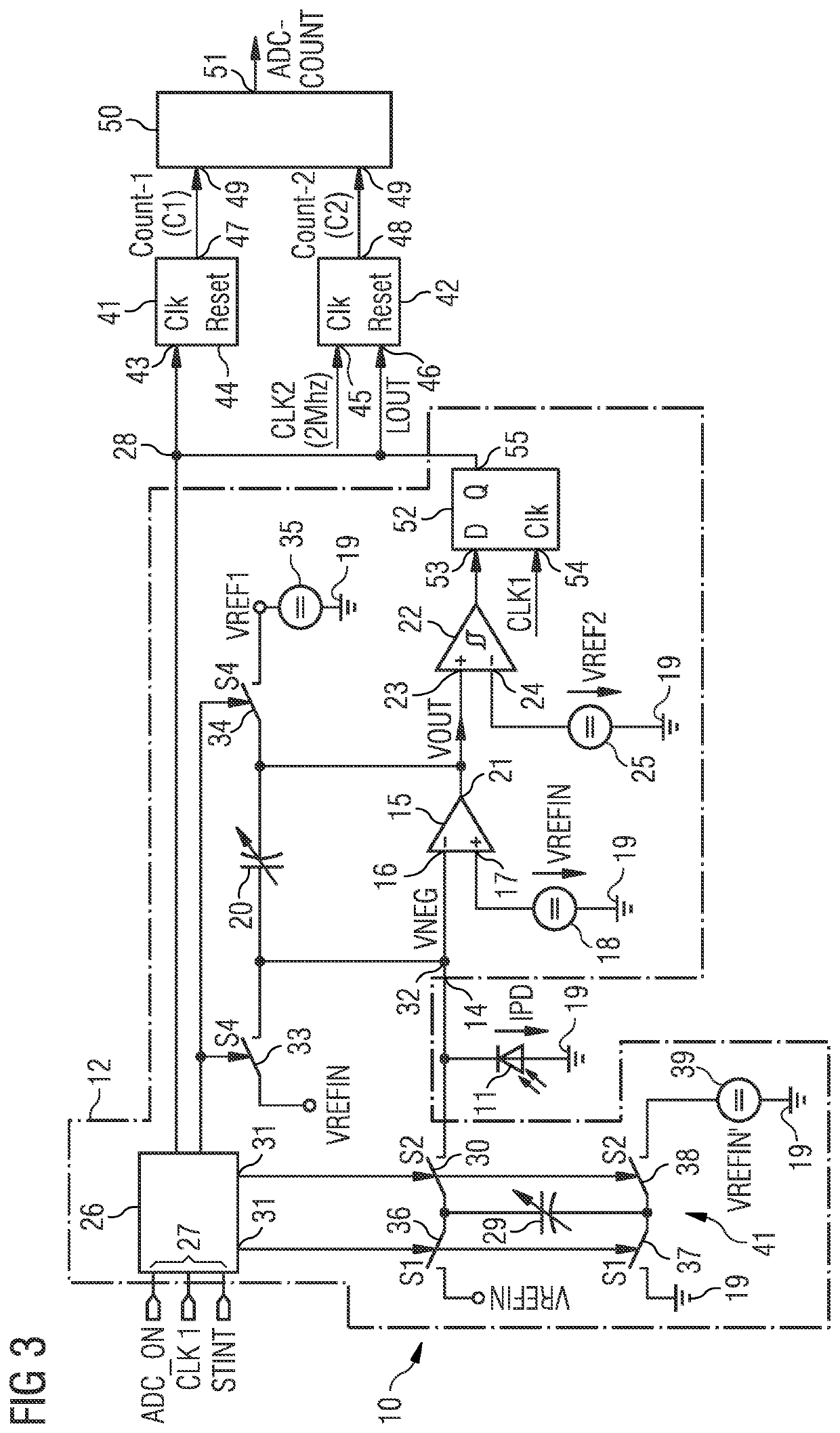Light-to-frequency converter arrangement and method for light-to-frequency conversion
a technology of light-to-frequency converter and arrangement, which is applied in the direction of code conversion, optical radiation measurement, instruments, etc., can solve the problems of small loss of light-to-frequency converter, large error, and failure to accurately estimate incident light, etc., to achieve accurate measurement, solve and measure accurately residual signal, and achieve the effect of avoiding significant loss of accuracy
- Summary
- Abstract
- Description
- Claims
- Application Information
AI Technical Summary
Benefits of technology
Problems solved by technology
Method used
Image
Examples
Embodiment Construction
lass="d_n">[0031]FIG. 1 shows an exemplary embodiment of an optical sensor arrangement 10. The optical sensor arrangement 10 comprises a photodiode 11 and an analog-to-digital converter arrangement 12, abbreviated as converter hereinafter. Furthermore, the optical sensor arrangement 10 comprises a signal processing unit 40. The converter 12 and the signal processing unit 40 are combined into a light-to-frequency converter which may be designed as an integrated circuit.
[0032]Typically, the photodiode 11 is connected to the integrated circuit as an external component but may just as well be part of the integrated circuit in some embodiments. The light-to-frequency converter and photodiode can be considered an optical sensor arrangement hereinafter. In one or more embodiments the optical sensor arrangement is used an ambient light sensor. Similar circuits are described in EP 2863192 A1 and EP 2787331 A1 which are included by reference.
[0033]The photodiode 11 is connected to an input 14...
PUM
| Property | Measurement | Unit |
|---|---|---|
| frequency | aaaaa | aaaaa |
| frequency | aaaaa | aaaaa |
| integration time TINT | aaaaa | aaaaa |
Abstract
Description
Claims
Application Information
 Login to View More
Login to View More - R&D
- Intellectual Property
- Life Sciences
- Materials
- Tech Scout
- Unparalleled Data Quality
- Higher Quality Content
- 60% Fewer Hallucinations
Browse by: Latest US Patents, China's latest patents, Technical Efficacy Thesaurus, Application Domain, Technology Topic, Popular Technical Reports.
© 2025 PatSnap. All rights reserved.Legal|Privacy policy|Modern Slavery Act Transparency Statement|Sitemap|About US| Contact US: help@patsnap.com



